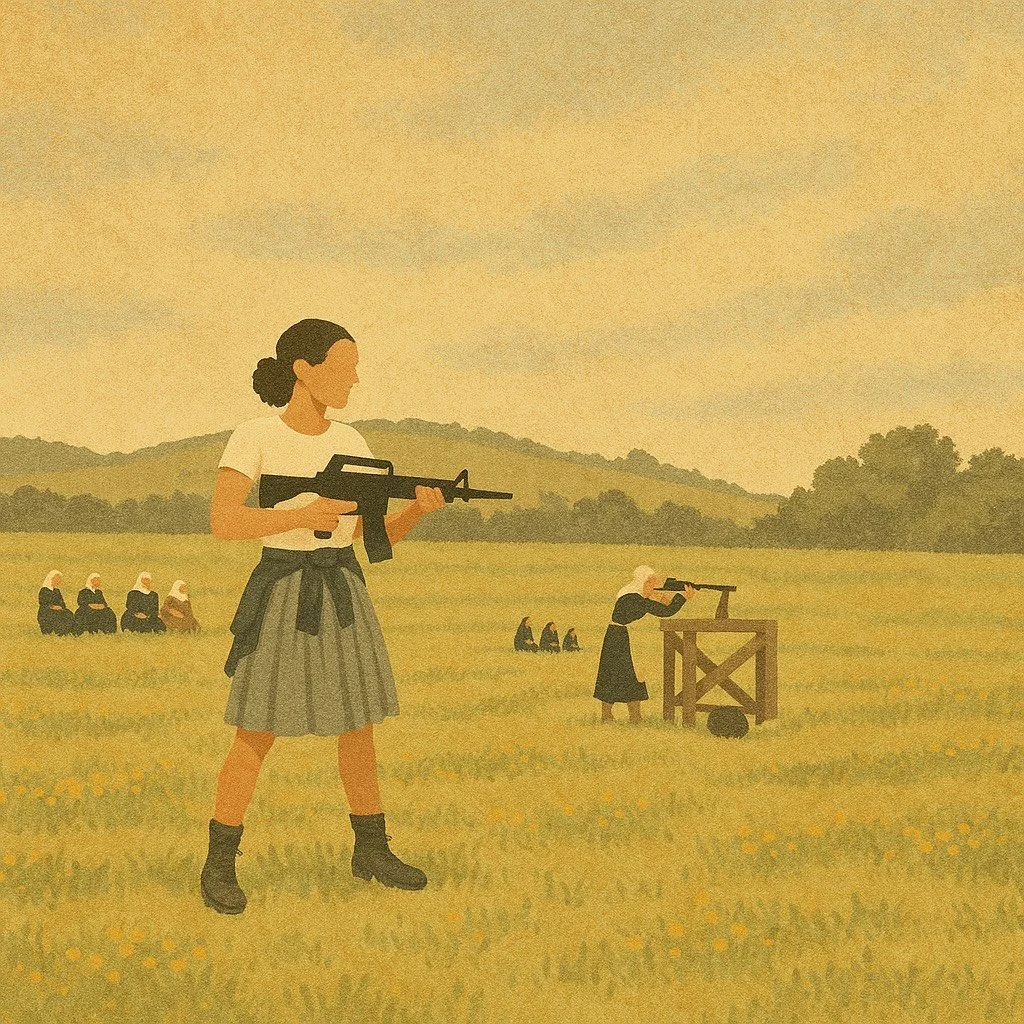One Battle After Another: The Defining Film of the Decade
Article by: Krubel Berhe / Graphic by: Naya Moukabary
Every few years, a movie will come around that stands tall as something special. Something that reminds us of the power this medium has and all it can do. An instant classic that’ll only be talked about more and more as time goes on. A work of art that reflects and reinvents the culture and world of its time. In the 70s, it was Star Wars, in the 90s, it was Jurassic Park, and as of now, in the 2020s, it’s Paul Thomas Anderson’s One Battle After Another. So, how does One Battle After Another exemplify these traits of a decade-defining film?
Firstly, we need to consider the times we’re living in. To say our country is divided right now would be a massive understatement. Recent developments, such as the ICE raids, getting rid of the DEI initiative, and Charlie Kirk's murder, have caused immense nationwide controversy. The biggest of these is the substantial increase in ICE raids since January, with ICE agents using increasingly unflinching and unjust violence towards immigrants. Neo-Nazi ideals and activities are spreading like wildfire, with the lynching of Trey Reed being a tragic example of this. The worst part of this inhumane murder is that, rather than it being called what it is, the Coroner’s office labeled it a suicide. An aspiring dictator is running the country, and it seems as though we’re falling faster and faster as a society, and instead of advancing, we’re regressing. The world is only getting crueler by the minute, and all forms of resistance seem futile. So, how does One Battle After Another reflect the bleak reality of the modern world?
The film centers around Bob Ferguson, an ex-revolutionary turned paranoid stoner, searching for his missing daughter, Willa, after his old nemesis Lockjaw comes searching for them. What precedes is two hours and forty minutes of pure, unfiltered adrenaline. Throughout the movie, we’re shown different forms of revolution, ranging from secret code-oriented groups to groups with an " if you can pitch in, help out mentality. The first main symbol of revolution is shown in the film's opening moments through Perfidia. She’s shown to be bold, headstrong, and ambitious. However, her fire for the revolution is put in jeopardy when she’s arrested after a botched robbery, and she’s forced to give up the names of those working in the revolution or else she’ll spend the rest of her life in prison. Her legacy as a revolutionary becomes tainted and is solely remembered for being a rat. The rest of the revolutionaries resent her for what she did; however, once they get put in custody, they do the same thing Perfidia did. The main antagonists of the film are white supremacists exercising their power to silence vocal minorities. They look down on minorities and see them as lesser than. Lockjaw attempts to murder Willa, his long-lost daughter, just so that his higher-ups will let him into their exclusive club. Willa resents the revolution and her mother, yet she has the same fiery passion as her mother. All of this reaches its boiling point during the film's final moments.
The climax of the film centers around Willa escaping from her captors. Long, never-ending hills of road are the only clear thing in her path, taking her up and down and back again. Those wishing to silence her are trailing right behind her, as is her surrogate father, moving heaven and earth to get back to his daughter. It feels like all hope is lost until Willa takes matters into her own hands and brings her oppressor down of her own accord. In the movie's closing moments, Willa receives a letter her mother wrote explaining how, despite her mistakes, she loves Willa and regrets walking away from her. Willa overhears a call for help on a local radio station and gets ready to leave. Bob tells her to be careful, and she replies, saying she won’t. Willa’s not her mother, but that doesn’t mean she won’t fight for a better tomorrow.
The entire film is centered around this ideal. Things may seem bleak, and that any form of resistance is pointless, but that couldn’t be further from the truth. Yes, we are prone to make mistakes in the fight for a better tomorrow, but that doesn’t mean we should give up. This fight didn’t end with our ancestors, and it doesn’t end with us either. It grows and adapts, but so will we. Any resistance is substantial. Every subsequent battle leads to another, but the fact that more battles arise proves that a difference is being made. This fight lives on in every single one of us, and it’s our God given right to make use of it.
Sources:
https://www.ice.gov/features/100-days
https://www.politico.com/news/magazine/2025/10/14/former-ice-director-q-a-00603916
